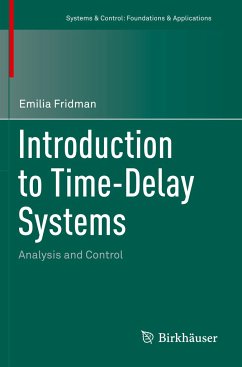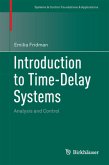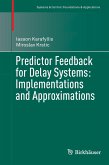The beginning of the 21st century can be characterized as the" time-delay boom" leading to numerous important results. The purpose of this book is two-fold, to familiarize the non-expert reader with time-delay systems and to provide a systematic treatment of modern ideas and techniques for experts. This book is based on the course "Introduction to time-delay systems" for graduate students in Engineering and Applied Mathematics that the author taught in Tel Aviv University in 2011-2012 and 2012-2013 academic years. The sufficient background to follow most of the material are the undergraduate courses in mathematics and an introduction to control. The book leads the reader from some basic classical results on time-delay systems to recent developments on Lyapunov-based analysis and design with applications to the hot topics of sampled-data and network-based control. The objective is to provide useful tools that will allow the reader not only to apply the existing methods, but also to develop new ones. It should be of interest for researchers working in the field, for graduate students in engineering and applied mathematics, and for practicing engineers. It may also be used as a textbook for a graduate course on time-delay systems.
"This book is devoted to analysis of time delay systems and control design for such systems. ... The book provides numerous examples, exercises and a detailed list of references. It is readable enough and can be useful to engineers and mathematicians, as well as to graduate students." (Valery Y. Glizer, Mathematical Reviews, April, 2015)









